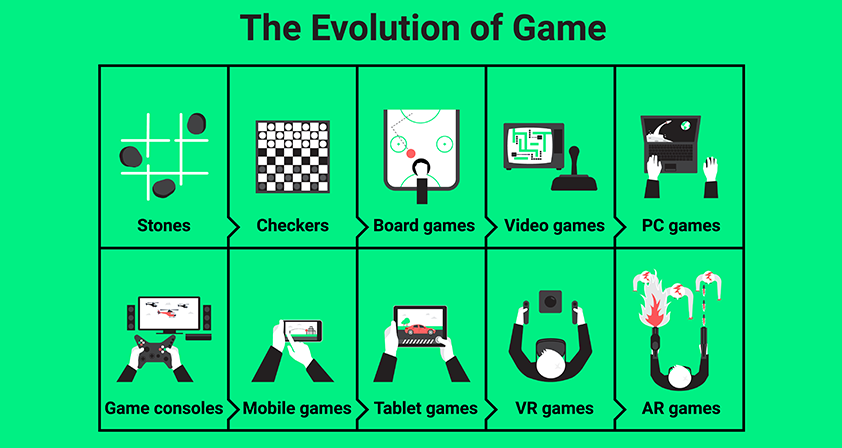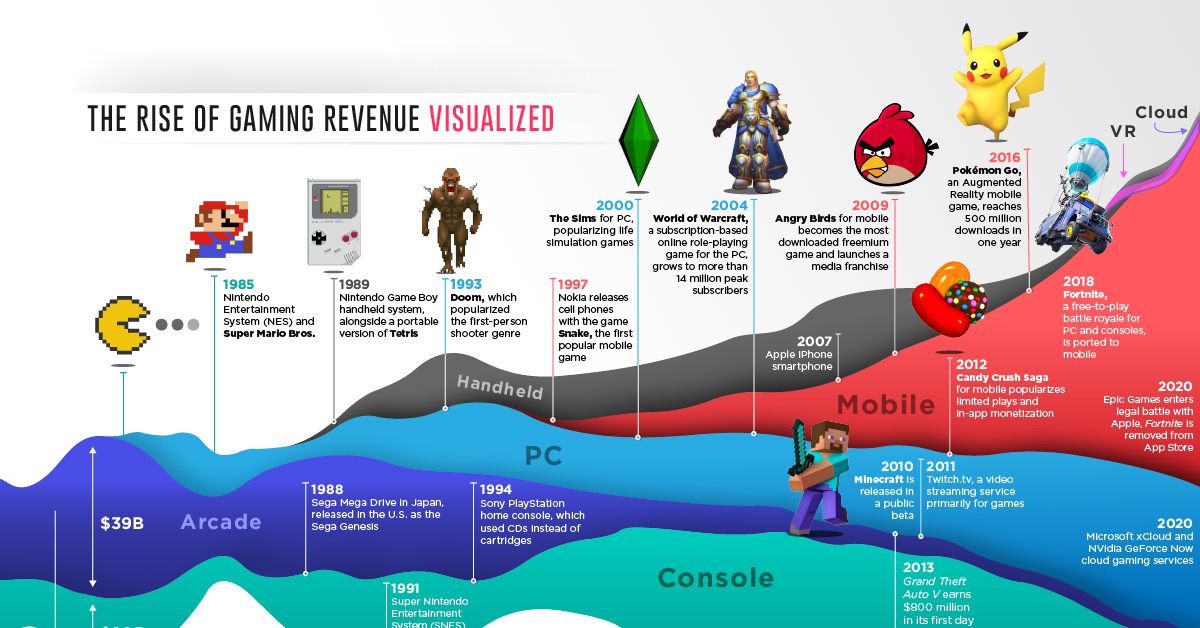The Evolution Of Free-to-Play: Understanding The Rise Of Free PC Online Gaming
The Evolution of Free-to-Play: Understanding the Rise of Free PC Online Gaming
Related Articles: The Evolution of Free-to-Play: Understanding the Rise of Free PC Online Gaming
Introduction
In this auspicious occasion, we are delighted to delve into the intriguing topic related to The Evolution of Free-to-Play: Understanding the Rise of Free PC Online Gaming. Let’s weave interesting information and offer fresh perspectives to the readers.
Table of Content
The Evolution of Free-to-Play: Understanding the Rise of Free PC Online Gaming

The landscape of online gaming has undergone a dramatic transformation in recent years, with a significant shift towards the "free-to-play" model. This shift has revolutionized the way gamers engage with video games, offering them unprecedented accessibility and a diverse array of experiences. This article delves into the complex factors that have contributed to the proliferation of free PC online gaming, exploring the economic, technological, and cultural forces at play.
The Economic Shift: From Boxed Sales to Microtransactions
The traditional model of video game monetization, reliant on upfront purchase of physical copies or digital downloads, faced several limitations. The high cost of game development and marketing, coupled with the increasing dominance of digital distribution platforms like Steam, led to a search for more sustainable revenue models. This search culminated in the rise of free-to-play, a model that relies on a combination of microtransactions and optional in-game purchases.
This shift was driven by several key factors:
- Reduced Barriers to Entry: Free-to-play games eliminate the initial financial hurdle of purchasing a game, allowing players to experience the game without any upfront cost. This significantly expands the potential player base, attracting casual gamers, budget-conscious individuals, and those who prefer to try a game before committing to a purchase.
- Microtransactions as a Primary Revenue Stream: Free-to-play games generate revenue through optional in-game purchases, such as cosmetic items, virtual currency, and power-ups. These microtransactions can be highly profitable, especially when targeted at a large player base.
- Enhanced Engagement through Monetization: Free-to-play games often utilize microtransactions to incentivize player engagement. Players can spend money to acquire advantages, unlock exclusive content, or simply customize their gameplay experience. This creates a continuous cycle of engagement, as players are motivated to invest time and potentially money to progress within the game.
Technological Advancements: Enabling Free-to-Play Models
The emergence of free-to-play gaming was also facilitated by significant technological advancements:
- Broadband Internet Penetration: The widespread availability of high-speed internet connections made online gaming a viable and enjoyable experience for a larger population. This enabled the development of complex online games that could be delivered and played seamlessly over the internet.
- Cloud Computing and Server Infrastructure: Cloud computing platforms offered cost-effective solutions for hosting massive multiplayer games, reducing the infrastructure costs associated with traditional game development and distribution.
- Mobile Gaming Growth: The rise of mobile gaming, primarily driven by free-to-play models, paved the way for similar models to be adopted on PC platforms. Mobile games demonstrated the potential of microtransactions to generate significant revenue, even without upfront purchases.
Cultural Acceptance and the Rise of Esports
The cultural acceptance of free-to-play gaming has been further fueled by the growing popularity of esports. Free-to-play games, with their accessible entry points and competitive gameplay, have become a breeding ground for professional esports players. This has created a feedback loop, attracting more players to the genre and further legitimizing the free-to-play model within the gaming community.
Benefits of Free-to-Play Gaming:
- Accessibility: Free-to-play games offer a barrier-free entry point, allowing gamers of all backgrounds and financial means to experience the joys of online gaming.
- Variety and Experimentation: The abundance of free-to-play games provides players with a vast library of options to explore, facilitating experimentation and discovering new genres and gameplay styles.
- Community Building: Free-to-play games often foster large and vibrant online communities, allowing players to connect, collaborate, and compete with others from around the world.
- Innovation in Game Design: The free-to-play model has encouraged developers to innovate in terms of gameplay mechanics, monetization strategies, and player engagement.
Challenges of Free-to-Play Gaming:
- Pay-to-Win Mechanics: A common criticism of free-to-play games is the implementation of "pay-to-win" mechanics, where players who spend money can gain a significant advantage over those who do not. This can create an uneven playing field and undermine the sense of fairness in competitive gameplay.
- Addiction and Excessive Spending: The potential for addictive gameplay and excessive spending on microtransactions is a concern for some players, particularly those who may be vulnerable to impulsive spending.
- Game Balance and Monetization: Balancing the need for monetization with maintaining a fair and balanced gameplay experience is a constant challenge for free-to-play game developers.
FAQs about Free-to-Play Gaming:
1. Is free-to-play gaming truly free?
While the initial entry point is free, free-to-play games often monetize through optional in-game purchases. These purchases can range from cosmetic items to power-ups and virtual currency, which can impact gameplay. However, the core gameplay experience is typically free, allowing players to enjoy the game without spending any money.
2. Are free-to-play games inferior to paid games?
The quality of a game is not solely determined by its price. Many free-to-play games are highly polished, innovative, and offer engaging gameplay experiences comparable to paid games. However, some free-to-play games may prioritize monetization over gameplay quality, leading to imbalances or potentially unfair advantages for paying players.
3. How do free-to-play games generate revenue?
Free-to-play games primarily generate revenue through microtransactions, which are optional in-game purchases. These purchases can include cosmetic items, virtual currency, power-ups, or other enhancements that enhance the gameplay experience.
4. Is free-to-play gaming a sustainable model?
The free-to-play model has proven to be highly successful and sustainable, generating significant revenue for developers and publishers. This model has become the dominant force in online gaming, particularly in the mobile gaming market.
5. What are the future trends in free-to-play gaming?
The future of free-to-play gaming is likely to be driven by advancements in technology, such as cloud gaming and virtual reality. We can expect to see more immersive and engaging free-to-play experiences, with a greater focus on community building and player interaction.
Tips for Playing Free-to-Play Games:
- Set a Budget: Before starting a free-to-play game, it’s essential to set a budget for potential in-game purchases. This will help you avoid overspending and ensure that your gaming experience remains enjoyable.
- Research the Game’s Monetization System: Familiarize yourself with the game’s microtransaction system before committing to playing. This will give you a better understanding of how the game is monetized and whether it aligns with your preferred play style.
- Focus on Core Gameplay: Remember that free-to-play games are designed to be enjoyable even without spending money. Focus on mastering the core gameplay mechanics and enjoying the game’s core features.
- Engage with the Community: Join online communities or forums dedicated to the game you’re playing. This will allow you to connect with other players, share tips, and learn strategies for success.
Conclusion:
The rise of free-to-play gaming has fundamentally reshaped the video game industry, making online gaming accessible to a broader audience and fostering innovation in game design and monetization. While the free-to-play model has its own challenges, such as potential pay-to-win mechanics and concerns about excessive spending, it has undeniably revolutionized the way gamers engage with video games. As technology continues to advance and the gaming landscape evolves, the free-to-play model is likely to remain a dominant force, shaping the future of online gaming for years to come.








Closure
Thus, we hope this article has provided valuable insights into The Evolution of Free-to-Play: Understanding the Rise of Free PC Online Gaming. We thank you for taking the time to read this article. See you in our next article!